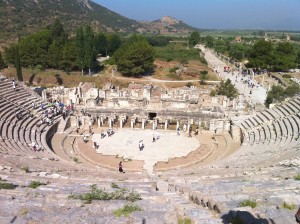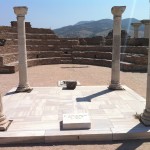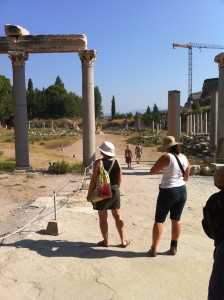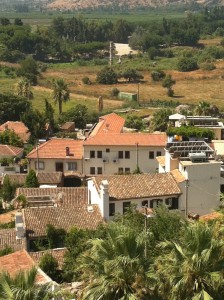
My first reaction to Ephesus was one of surprise over the expanse of the ruins and the size of the city. The pictures I took don’t accurately show the size, nor do other pictures I’d seen before coming here.
Ephesus was the second largest city in the world in the 1st century A.D. Only Rome was larger. The population of Ephesus at that time was about 250,000. Additionally, Ephesus was located on the Aegean Sea and was a busy port city. It was a New York City, Los Angeles, London of its day. It was no ordinary city.
The Apostle Paul chose to spend 3 years of his ministry here in Ephesus. When he got there he entered the synagogue and spent three months “reasoning and persuading them about the kingdom of God.” (Acts 19:8). Paul was intent on taking the Gospel to the whole world and yet he ended up parking it here for three years.

John, “the disciple whom Jesus loved”, chose to live here, and he died here. This is a photograph of his tomb.
I believe Paul and John chose Ephesus because they were strategic. They chose one of the largest cities in the world with one of the busiest ports in the world because there the kingdom of God had the best opportunity for growth. More people, more opportunity for the Gospel to spread.
As you can see from the photograph, the theater is huge. It held 44,000 people. I’m not sure we have any hard evidence that John or Paul preached there (although I heard some tour guides saying that today), but I believe it is likely. Paul and John were evangelistic. Paul was always looking for a good crowd to which to preach the Gospel.
What I took away from my visit to Ephesus was an appreciation for how strategic God is. We over-spiritualize so many things. The flag of the kingdom of God was planted in an empire famous for building roads and establishing trade routes throughout the known world. Those roads and trade routes would become the means by which the Gospel would spread throughout the world.
The tomb the disciple John (author of the gospel and Revelation) in Ephesus was also a highlight. Justinian built a beautiful church around John’s tomb in the 6th century. The church sits on the highest point in the area looking down over the ruins below of the Temple of Artemis, one of the Seven Wonders of the Ancient World. Every time one looked down from the church in the 6th century one would have been reminded of Christianity’s victory over paganism in the Roman Empire. It is still a reminder today that while paganism has seen its death, the kingdom of God continues to spread throughout the world as people continue to turn to and worship King Jesus. GS


